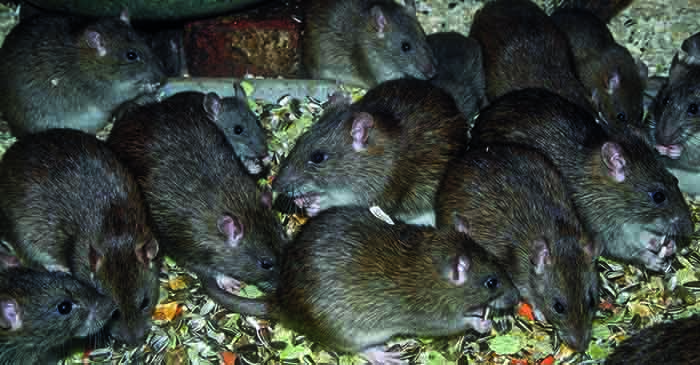Dr Alan Buckle, chairman of the Campaign for Responsible Rodenticide Use, sets out the challenges pig producers face
Rats resistant to some of the most widely-used high potency rodenticides have been identified in new locations by a University of Reading study.
Responsibility for tackling this spread of resistant rats is shared by farm users of professional rodenticides along with pest control contractors and gamekeepers, according to Dr Alan Buckle, chairman of the Campaign for Responsible Rodenticide Use.
He said: “For the first time, the gene responsible for the most severe form of resistance is present in East Anglia and West Yorkshire. This gene, known as L120Q, renders first-generation anticoagulant rodenticides and two of the second- generation group virtually ineffective.
“Resistance was already widespread in central southern England. The study has now identified three different types of resistant rats in West Yorkshire and along the Anglo-Welsh border.”
Report co-author Dr Colin Prescott warned against complacency elsewhere, stressing that a lack of sample availability means there is no data available to assess the situation in other regions.
“Another serious concern is that most rats with L120Q resistance carry the gene from both parents,” he said.
“This suggests that most or even all rats with some susceptibility have been eradicated by widespread use of resisted rodenticides, leaving a population of resistant pure-breds.”
Dr Buckle advised that resistance- breaking second-generation anticoagulant rodenticides are available, but must be used with great care. “Otherwise, their effectiveness will be jeopardised by indiscriminate use and they pose greater risk to the environment,” he added.
“The difficulty for farmers, of course, is knowing the resistance status of rats on their own units.”
To help in this, a new guide has been published by CRRU, available to download at http://bit.ly/2Iw0ig5.
One of its recommendations, where resistance status is not known, is to submit a 2-3cm rat tail tip for resistance testing to the Vertebrate Pests Unit at the University of Reading.
In some geographical localities, a small number of these tests are available free of charge (see http://bit.ly/2KYxWKs).
Dr Buckle said: “High-priority areas where little is known about resistance include central England, Scotland and Northern Ireland, although offers of tail samples are encouraged from farms in all UK locations.”
Alongside testing, Dr Buckle said farm rodenticide users should be led by the CRRU Code of Best Practice, which includes monitoring the results of control treatments. “If this suggests rats are surviving well- implemented control programmes, it may indicate the presence of resistance,” he said.
CRRU is responsible to a Health and Safety Executive-led Government Oversight Group (GOG) for the stewardship regime’s operation. For the regime to be judged a success by GOG, ‘meaningful and lasting’ reductions in rodenticide residues carried by non-target wildlife are expected.
“Without widespread best practice by farmers, enabled and supported by farm assurance and training, this might be an unlikely outcome,” Dr Buckle said. Specifically, the UK Rodenticide Resistance Action Group advised against using bromadiolone or difenacoum baits where rat populations are known to carry the most severe forms of anticoagulant resistance.
Permanent rodenticide baiting developments
On pig units where permanent rodenticide baiting is justified – defined by ‘a high potential for re-invasion where other methods have proved insufficient’ – the conditions under which it is allowed have been updated.
This covers a critical difference between outdoor and indoor locations. For the avoidance of doubt, ‘just in case’ permanent baiting is not permitted, according to product labels authorised by the HSE and the European Commission.
Dr Buckle said: “The updated ruling applies to indoor locations only. It specifies that the frequency of routine inspections and re-visits when target pest presence is indicated are a matter for the professional person in charge of the control programme – on a pig unit, typically the farm assured or stewardship certified manager/owner.
“Permanent outdoor bait points loaded with rodenticide continue to require re-inspection by the person in charge at least every four weeks.”
Permanent baiting in any location is permitted only using products with labels specifically stating such use.




